python字符串
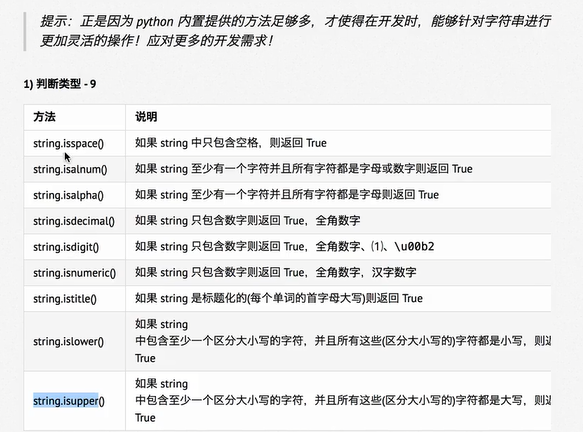
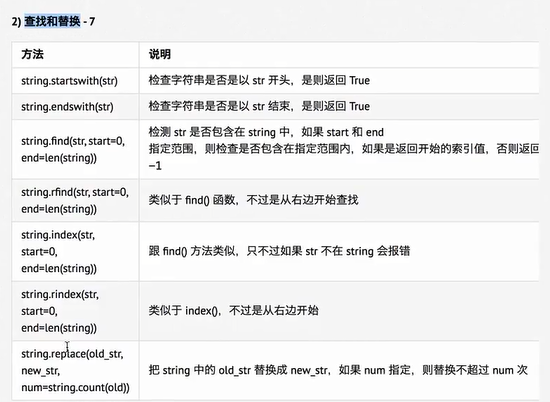
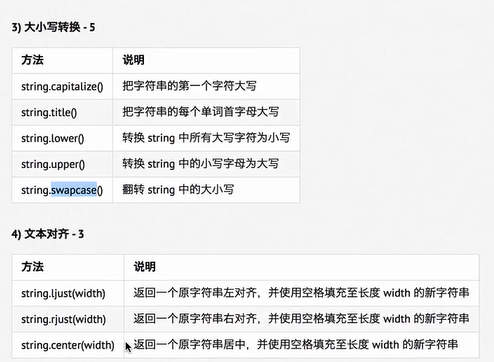
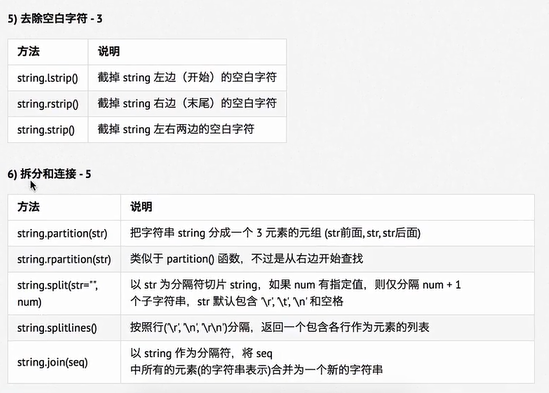

# isspace方法判断空白字符,转义字符
space_str=" "
print(space_str.isspace())
space_str1=" \t\n\r"
print(space_str1.isspace())
# 判断字符串是否只包含数字
# 下面三个方法都不能判断小数
# 三个方法判断的数字范围不同
num_str="5"
print(num_str.isdecimal())
print(num_str.isdigit())
print(num_str.isnumeric())
# 查找和替换
hello_str="hello python"
print(hello_str)
# 是否以指定字符串开始
print(hello_str.startswith("he"))
# 是否以指定字符串结尾
print(hello_str.endswith("on"))
# 查找指定字符串
# index方法同样可以查找指定字符串的位置
# index方法若指定的字符串的位置不存在,会报错
# 方法若指定的字符串的位置不存在,会输出-1
print(hello_str.find("llo"))
# 替换字符串
# replace方法执行完成后,会返回一个新的字符串
# 注意:并不会修改原来字符串
print(hello_str.replace("python","world"))
print(hello_str)
#文本对齐
# 把下列内容顺序并居中
poem=["登鹳雀楼",
"王之涣",
"白日依山尽",
"黄河入海流",
"欲穷千里目",
"更上一层楼"]
for poen_str in poem:
print("|%s|" %poen_str.center(10," "))
#去除空白字符
poem=["\t\n登鹳雀楼",
"王之涣",
"白日依山尽\t\n",
"黄河入海流",
"欲穷千里目",
"更上一层楼"]
for poen_str in poem:
# 先用strip方法去除空白字符
# 再使用center方法居中
print("|%s|" %poen_str.strip().center(10," "))
#拆分和连接
# 将字符串中的空白字符去掉
# 再使用" "作为分隔符,拼接成一个完整的字符串
poem_str="登鹳雀楼\t王之涣\t白日依山尽\t\n黄河入海流\t欲穷千里目\n更上一层楼"
print(poem_str)
poem_list=poem_str.split()
print(poem_list)
# 合并字符串
result=" ".join(poem_list)
print(result)
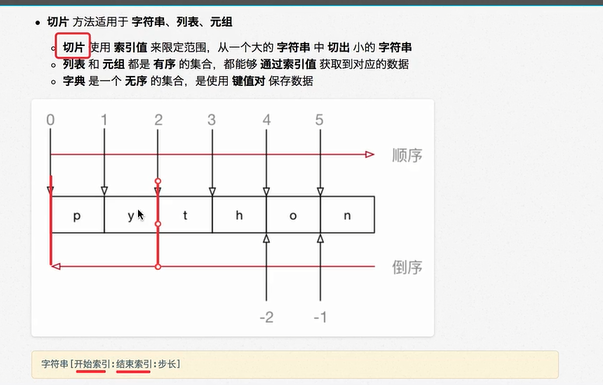
#字符串的切片
num_str="123456789"
# 截取从2到5的字符串
print(num_str[2:6])
# 截取从2- 末尾的字符串
print(num_str[2:])
# 截取开始~5位置的字符串
print(num_str[:6])
# 截取完整的字符串
print(num_str[:])
# 从开始位置,每隔一个字符截取字符串
print(num_str[0::2])
# 从索引1开始,每隔一个取一个
print(num_str[1::2])
# 截取2~末尾-1的字符
print(num_str[2:-1])
# 截取字符串末尾两个字符
print(num_str[-2:])
# 字符串的逆序
print(num_str[::-1])






